how to draw 3d vector diagrams
folds2d.tumblr.com

The goal
During last few days I've made several attempts to create and visualize 2D vector fields. In the following article you lot tin read nigh this concept with several examples and code in Processing.
There are many cute fine art/code based on vector field visualization around the cyberspace. By and large based on dissonance function. Check them out before you first:
- Visualizer by p5art
- Furfrolic past Holger Lippmann
- My own 2 sketches drawing_generative and threadraw
- Few examples on OpenProcessing site: i, 2, 3, 4
What is the vector field?
Vector field (in our example) is just a to
function exatly the same as variation described in my previous post about Folds.
Why vector? Because you tin treat a pair of every bit vector
for each bespeak from 2d plane. This way y'all get field of vectors.
Vector fields can be visualised in the following way

How to get the vector field
The master goal, in this article, is to research various ways to create vector fields. There ii cases.
We can operate on functions which returns pair of values like variations. In this case such part defines vector field itself. Nosotros can use too some vector operations (like substraction, sum, etc…) to get new functions.
The second pick is to get single float number like from noise(), dist() between points or dot production of vectors, etc. And convert this number into vector.
Drawing method
The method is quite elementary.
- Create points from
floating bespeak range
- Describe them
- For each of the point calculate relating vector from the vector field
- Scale information technology and add to the bespeak coordinates
- Repeat two-four
Step 4 is primal here. We move our points along vectors. Trace lines build the resulting image.
The full general menses for constructing vector field follows this scheme:
Note: I assume that on every step I can multiply function variables or returned values past any number.
Here is code stub for my experiments
// dynamic list with our points, PVector holds position ArrayList<PVector> points = new ArrayList<PVector>(); // colors used for points color[] pal = { color(0, 91, 197), color(0, 180, 252), color(23, 249, 255), colour(223, 147, 0), color(248, 190, 0) }; // global configuration float vector_scale = 0.01; // vector scaling factor, we desire small steps float time = 0; // time passes by void setup() { size(800, 800); strokeWeight(0.66); background(0, v, 25); noFill(); smooth(viii); // noiseSeed(1111); // sometimes nosotros select 1 racket field // create points from [-three,three] range for (bladder ten=-3; x<=3; 10+=0.07) { for (float y=-3; y<=three; y+=0.07) { // create indicate slightly distorted PVector 5 = new PVector(10+randomGaussian()*0.003, y+randomGaussian()*0.003); points.add(5); } } } void draw() { int point_idx = 0; // point index for (PVector p : points) { // map floating betoken coordinates to screen coordinates float twenty = map(p.x, -6.5, 6.5, 0, width); float yy = map(p.y, -six.five, 6.five, 0, peak); // select colour from palette (index based on racket) int cn = (int)(100*pal.length*noise(point_idx))%pal.length; stroke(pal[cn], 15); point(20, yy); //draw // placeholder for vector field calculations // 5 is vector from the field PVector 5 = new PVector(0, 0); p.x += vector_scale * v.x; p.y += vector_scale * v.y; // go to the next betoken point_idx++; } time += 0.001; } 
When I change my field vector to be abiding ane (unlike than 0), my points kickoff motility.
PVector v = new PVector(0.ane, 0.1);

Perlin noise
Allow's brainstorm with perlin noise in few configurations. I'm going to alter just marked lines from the code stub.
Variant 1
noise(x,y) part in processing returns value from 0 to 1 (really implementation used in Processing has some issues and real value is oftentimes in range from 0.2 to 0.8). I will care for resulted value every bit an angle in polar coordinates and employ sin()/cos() functions to convert it to cartesian ones. To properly practise this I have to calibration it up to range or
or fifty-fifty more. I show few variants here.
// placeholder for vector field calculations float northward = TWO_PI * noise(p.x,p.y); PVector v = new PVector(cos(n),sin(due north));
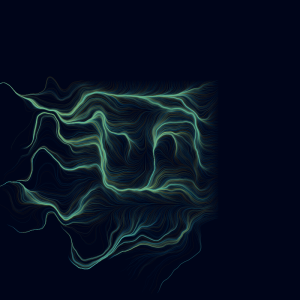
Variant 2
Let's check what happens when I multiply racket by ten, 100, 300 or fifty-fifty 1000. Noise is at present scaled to range (it is more usable range in further examples).
float n = 10 * map(dissonance(p.ten/5,p.y/v),0,ane,-ane,1); // 100, 300 or 1000 PVector v = new PVector(cos(n),sin(n));

1000
Variant 3
2 of above variants were using archetype method. At present I get rid of polar->cartesian conversion and I'thou going to treat returned value from noise() equally cartesian coordinates. Angle of the vector is the same for whole field and only length of vector is changed. This leads to some interesting patterns. Experiment with scaling input coordinates and
float n = 5*map(noise(p.10,p.y),0,1,-1,one); PVector v = new PVector(n,due north);
Parametric curves
Let's apply parametric curves to catechumen dissonance() result into vector. The large list of them is defined in Wolfram Blastoff or named here. Parametric curve (or plane bend) is a function . Click section name to see plot of the curve.
Astroid
// placeholder for vector field calculations bladder n = v*map(dissonance(p.ten,p.y),0,1,-ane,1); // and two bladder sinn = sin(n); float cosn = cos(north); float xt = sq(sinn)*sinn; bladder yt = sq(cosn)*cosn; PVector v = new PVector(xt,yt);
Results for noise calibration ii and 5
Cissoid of Diocles
// placeholder for vector field calculations float n = 3*map(noise(p.x,p.y),0,one,-1,ane); bladder sinn2 = 2*sq(sin(northward)); float xt = sinn2; bladder yt = sinn2*tan(due north); PVector v = new PVector(xt,yt);

Kampyle of Eudoxus
// placeholder for vector field calculations float n = 6*map(noise(p.x,p.y),0,1,-one,1); bladder sec = 1/sin(n); float xt = sec; float yt = tan(n)*sec; PVector five = new PVector(xt,yt);

Rectangular Hyperbola
// placeholder for vector field calculations float north = 10*map(dissonance(p.10*2,p.y*2),0,1,-1,1); float xt = ane/sin(northward); float yt = tan(n); PVector five = new PVector(xt,yt);
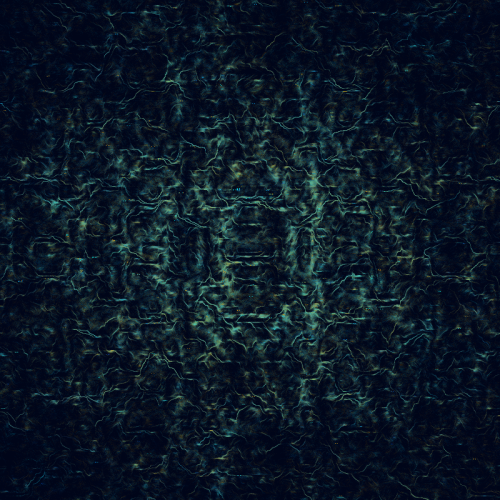
Superformula
// placeholder for vector field calculations float n = five*map(dissonance(p.ten,p.y),0,one,-1,one); float a = i; float b = 1; bladder m = half-dozen; bladder n1 = 1; float n2 = 7; float n3 = 8; bladder f1 = pow(abs(cos(chiliad*due north/4)/a),n2); bladder f2 = pow(abs(sin(m*due north/4)/b),n3); float fr = pow(f1+f2,-1/n1); float xt = cos(north)*fr; bladder yt = sin(n)*fr; PVector five = new PVector(xt,yt);
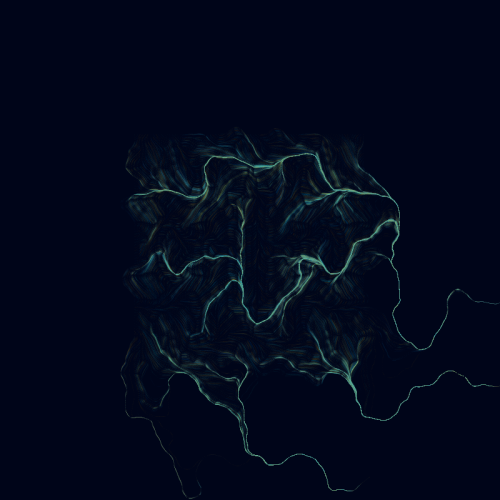
Noise and curves combined
At present I'm going to play with some combinations of above curves and make multiple passes through noise().
Allow's put all curves into functions (paste following code to the end of the script):
PVector circumvolve(float northward) { // polar to cartesian coordinates return new PVector(cos(n), sin(n)); } PVector astroid(float northward) { float sinn = sin(northward); bladder cosn = cos(n); bladder xt = sq(sinn)*sinn; float yt = sq(cosn)*cosn; return new PVector(xt, yt); } PVector cissoid(bladder northward) { float sinn2 = 2*sq(sin(northward)); float xt = sinn2; bladder yt = sinn2*tan(n); render new PVector(xt, yt); } PVector kampyle(float north) { bladder sec = i/sin(n); float xt = sec; float yt = tan(n)*sec; return new PVector(xt, yt); } PVector rect_hyperbola(float n) { float sec = ane/sin(n); float xt = 1/sin(northward); bladder yt = tan(n); return new PVector(xt, yt); } final static float superformula_a = one; concluding static float superformula_b = one; final static float superformula_m = 6; final static float superformula_n1 = i; final static float superformula_n2 = vii; final static bladder superformula_n3 = eight; PVector superformula(float northward) { bladder f1 = pow(abs(cos(superformula_m*northward/4)/superformula_a), superformula_n2); float f2 = pw(abs(sin(superformula_m*northward/four)/superformula_b), superformula_n3); float fr = prisoner of war(f1+f2, -ane/superformula_n1); float xt = cos(north)*fr; float yt = sin(n)*fr; render new PVector(xt, yt); } Variant 1 – p5art
Code based on p5art spider web app noisePainting
// placeholder for vector field calculations float n1 = 10*noise(one+p.x/twenty, i+p.y/20); // shift input to avert symetry float n2 = 5*dissonance(n1, n1); bladder n3 = 325*map(noise(n2, n2), 0, 1, -1, ane); // 25,325 PVector v = circumvolve(n3);
Variant two
// placeholder for vector field calculations float n1 = 15*map(racket(1+p.x/xx, one+p.y/twenty),0,1,-one,ane); PVector v1 = cissoid(n1); PVector v2 = astroid(n1); float n2a = 5*dissonance(v1.x,v2.y); float n2b = five*noise(v2.x,v1.y); bladder n3 = 10*map(noise(n2a, n2b/3), 0, 1, -1, one); PVector v = circle(n3);
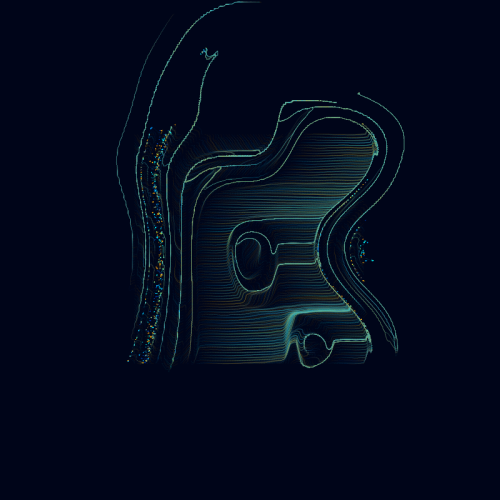
Variant 3
// placeholder for vector field calculations float n1 = 15*map(noise(1+p.x/10, ane+p.y/10),0,1,-ane,i); PVector v1 = rect_hyperbola(n1); PVector v2 = astroid(n1); float n2a = 2*map(racket(v1.x,v1.y),0,one,-ane,1); float n2b = 2*map(noise(v2.10,v2.y),0,one,-1,i); PVector v = new PVector(n2a,n2b);

Variant 4
// placeholder for vector field calculations PVector v1 = kampyle(p.x); PVector v2 = superformula(p.y); float n2a = 3*map(noise(v1.x,v1.y),0,1,-1,i); float n2b = 3*map(noise(v2.x,v2.y),0,1,-1,i); PVector 5 = new PVector(cos(n2a),sin(n2b));
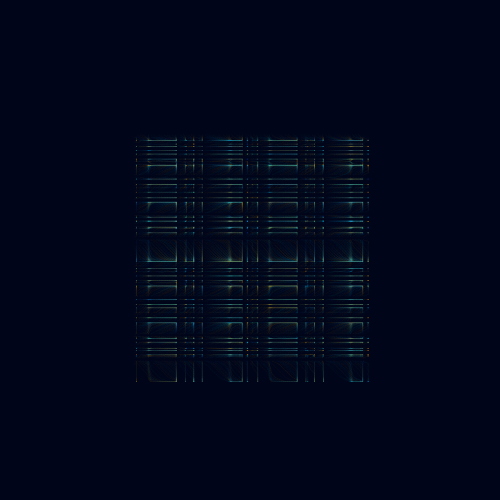
Variant 5
// placeholder for vector field calculations float n1a = 3*map(noise(p.x,p.y),0,1,-ane,1); float n1b = 3*map(racket(p.y,p.x),0,1,-i,1); PVector v1 = rect_hyperbola(n1a); PVector v2 = astroid(n1b); float n2a = 3*map(noise(v1.x,v1.y),0,1,-ane,one); float n2b = three*map(dissonance(v2.x,v2.y),0,1,-one,ane); PVector five = new PVector(cos(n2a),sin(n2b));

Variant half dozen – comparison
Hither I desire to compare dissimilar curves using the same method. I change marked lines into pair of curves defined above. I've putnoiseSeed(1111); in setup() to have the same racket construction. Check image description to encounter what curves were used.
// placeholder for vector field calculations float n1a = 15*map(noise(p.10/10,p.y/10),0,1,-ane,1); float n1b = 15*map(noise(p.y/10,p.x/10),0,one,-ane,1); PVector v1 = superformula(n1a); PVector v2 = circumvolve(n1b); PVector diff = PVector.sub(v2,v1); diff.mult(0.3); PVector v = new PVector(diff.ten,unequal.y);

kampyle, rect_hyperbola

kampyle, cissoid

astroid, kampyle

astroid, cissoid

circle, cissoid

rect_hyperbola, superformula

superformula, circle
Time
Now permit's introduce time. An external variable which is incremented every frame with some small value. It can be used to slightly alter dissonance field during rendrering or can be used every bit a scale cistron.
Let's compare the same vector field without time and time used as tertiary racket parameter.
// placeholder for vector field calculations bladder n1a = 3*map(noise(p.x/2,p.y/2),0,1,-1,1); float n1b = 3*map(noise(p.y/2,p.ten/two),0,i,-i,i); float nn = 6*map(noise(n1a,n1b),0,1,-i,1); PVector v = circle(nn);

And now I add time as a third parameter to noise function. This way our vector field changes when time passes.
// placeholder for vector field calculations bladder n1a = 3*map(noise(p.ten/2,p.y/2,time),0,1,-1,1); float n1b = 3*map(noise(p.y/ii,p.x/2,time),0,ane,-ane,i); float nn = half-dozen*map(noise(n1a,n1b,time),0,ane,-1,1); PVector v = circle(nn);

At present time is used as a scaling factor.
// placeholder for vector field calculations float n1a = 3*map(racket(p.ten/2,p.y/2),0,ane,-ane,1); bladder n1b = three*map(racket(p.y/2,p.x/two),0,1,-1,1); bladder nn = time*x*6*map(dissonance(n1a,n1b),0,1,-1,1); PVector v = circle(nn);
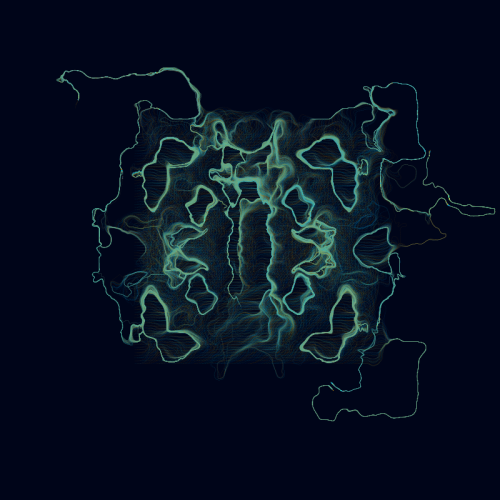
Variations
Now let's innovate variations (run across previous mail about Folds) as a vector field definition.
Re-create beneath code to the end of your sketch. Information technology includes function definiotions used in this and side by side capacity.
PVector sinusoidal(PVector v, float amount) { render new PVector(amount * sin(v.x), corporeality * sin(v.y)); } PVector waves2(PVector p, float weight) { float x = weight * (p.x + 0.9 * sin(p.y * 4)); float y = weight * (p.y + 0.five * sin(p.x * 5.555)); return new PVector(x, y); } PVector polar(PVector p, float weight) { float r = p.magazine(); bladder theta = atan2(p.x, p.y); float x = theta / PI; float y = r - 2.0; return new PVector(weight * x, weight * y); } PVector swirl(PVector p, bladder weight) { bladder r2 = sq(p.x)+sq(p.y); float sinr = sin(r2); float cosr = cos(r2); bladder newX = 0.eight * (sinr * p.ten - cosr * p.y); float newY = 0.eight * (cosr * p.y + sinr * p.y); return new PVector(weight * newX, weight * newY); } PVector hyperbolic(PVector v, float amount) { float r = v.mag() + 1.0e-10; float theta = atan2(v.x, 5.y); bladder x = amount * sin(theta) / r; float y = amount * cos(theta) * r; return new PVector(x, y); } PVector ability(PVector p, float weight) { bladder theta = atan2(p.y, p.x); bladder sinr = sin(theta); float cosr = cos(theta); float pw = weight * pow(p.mag(), sinr); return new PVector(prisoner of war * cosr, pow * sinr); } PVector cosine(PVector p, float weight) { float pix = p.x * PI; float x = weight * 0.8 * cos(pix) * cosh(p.y); bladder y = -weight * 0.8 * sin(pix) * sinh(p.y); return new PVector(x, y); } PVector cross(PVector p, float weight) { float r = sqrt(1.0 / (sq(sq(p.10)-sq(p.y)))+ane.0e-10); return new PVector(weight * 0.8 * p.x * r, weight * 0.8 * p.y * r); } PVector vexp(PVector p, float weight) { float r = weight * exp(p.x); return new PVector(r * cos(p.y), r * sin(p.y)); } // parametrization P={pdj_a,pdj_b,pdj_c,pdj_d} float pdj_a = 0.one; float pdj_b = 1.9; float pdj_c = -0.8; float pdj_d = -ane.2; PVector pdj(PVector 5, float amount) { return new PVector( amount * (sin(pdj_a * v.y) - cos(pdj_b * 5.x)), amount * (sin(pdj_c * v.10) - cos(pdj_d * v.y))); } final bladder cosh(bladder x) { return 0.v * (exp(10) + exp(-10));} final float sinh(float x) { return 0.five * (exp(10) - exp(-x));} Permit's see how individual variations look equally vector fields. Sometimes I had to adjust scaling factor to keep points on the screen.
// placeholder for vector field calculations PVector v = sinusoidal(p,1); v.mult(1); // different values for unlike functions
All together
Let'south sumarize what functions we have now defined.
All to a higher place operations can exist used to generate vector field (or simply transform 2d indicate to another second betoken).
I will play with to a higher place transformations in post-obit examples. Information technology's a record of experiments.
Variant one
// placeholder for vector field calculations float n1 = 5*map(noise(p.ten/5,p.y/five),0,1,-1,1); PVector v1 = rect_hyperbola(n1); PVector v2 = swirl(v1,1); PVector five = new PVector(cos(v2.x),sin(v2.y));

Variant 2
// placeholder for vector field calculations bladder n1 = 5*map(noise(p.x/5,p.y/5),0,ane,-1,one); bladder n2 = 5*map(noise(p.y/five,p.x/5),0,1,-1,1); PVector v1 = vexp(new PVector(n1,n2),one); PVector v2 = swirl(new PVector(n2,n1),1); PVector v3 = PVector.sub(v2,v1); PVector v4 = waves2(v1,1); v4.mult(0.8); PVector v = new PVector(v4.ten,v4.y);
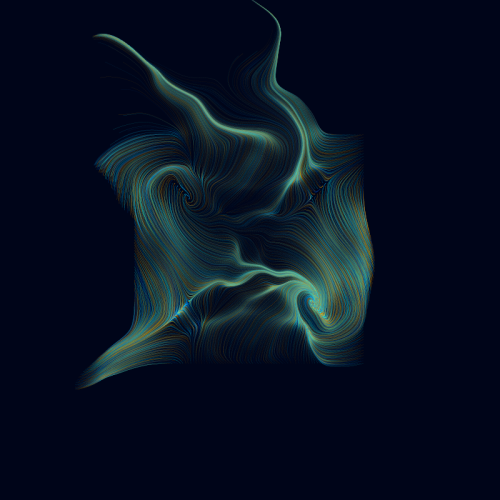
Variant 3
// placeholder for vector field calculations PVector v1 = vexp(p,1); float n1 = map(dissonance(v1.10,v1.y,fourth dimension),0,1,-1,one); bladder n2 = map(noise(v1.y,v1.x,-time),0,ane,-ane,1); PVector v2 = vexp(new PVector(n1,n2),1); PVector v = new PVector(v2.ten,v2.y);
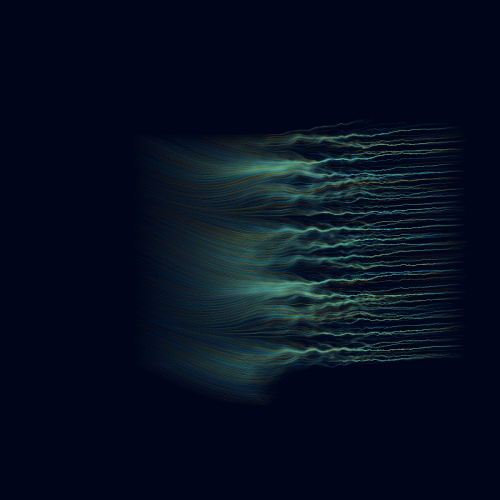
Variant iv
// placeholder for vector field calculations PVector v1 = polar(cross(p,ane),1); float n1 = fifteen*map(dissonance(v1.10,v1.y,time),0,1,-1,ane); PVector v2 = cissoid(n1); v2.normalize(); PVector v = new PVector(v2.x,v2.y);
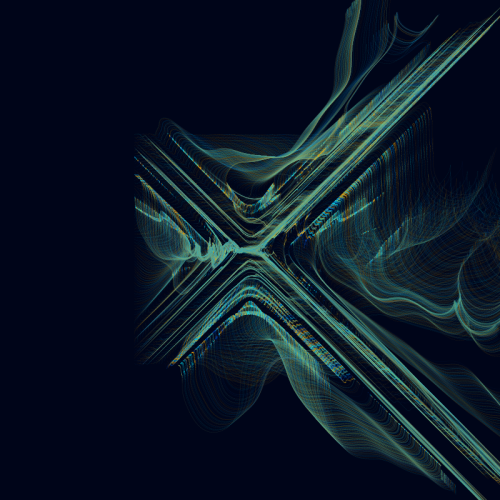
Variant 5
// placeholder for vector field calculations PVector v1 = power(p,1); float n1 = v*map(dissonance(v1.x,v1.y,fourth dimension),0,ane,-1,one); float n2 = 5*map(noise(p.10/iii,p.y/3,-time),0,one,-1,ane); PVector v2 = cosine(new PVector(n1,n2),1); bladder a1 = PVector.angleBetween(v1,v2); PVector v3 = superformula(a1); v3.mult(3); PVector v = new PVector(cos(v3.x),sin(v3.y));

Variant 6
// placeholder for vector field calculations PVector v1 = waves2(p,1); PVector v2 = PVector.sub(v1,p); float n1 = viii*dissonance(time)*atan2(v1.y,v1.x); float n2 = eight*dissonance(time+0.v)*atan2(v2.y,v2.ten); PVector five = new PVector(cos(v2.x*n1),sin(v1.y+n2));

Variant seven
// placeholder for vector field calculations PVector v1 = swirl(p,1); v1.mult(0.five); PVector v2 = PVector.sub(v1,p); float nv1 = noise(v1.ten,v1.y,time); float nv2 = noise(v2.10,v2.y,-fourth dimension); float n1 = (atan2(v1.y,v1.10)+nv2); bladder n2 = (atan2(v2.y,v2.10)+nv1); PVector v3 = superformula(n1); PVector v4 = rect_hyperbola(n2); PVector tv3 = waves2(v3,1); PVector tv4 = sinusoidal(v4,1); PVector v5 = PVector.sub(tv4,tv3); PVector v6 = pdj(v5,1); bladder an = PVector.angleBetween(v6,new PVector(n1,n2)); PVector five = new PVector(cos(v2.x+sin(an)),sin(v6.y-cos(an))); v.mult(1+time*xl);

Image
The concluding part is virtually using aqueduct information from an image as a vector field. I wrote two sketches some time ago which are based on vector field concept.
Drawing generative
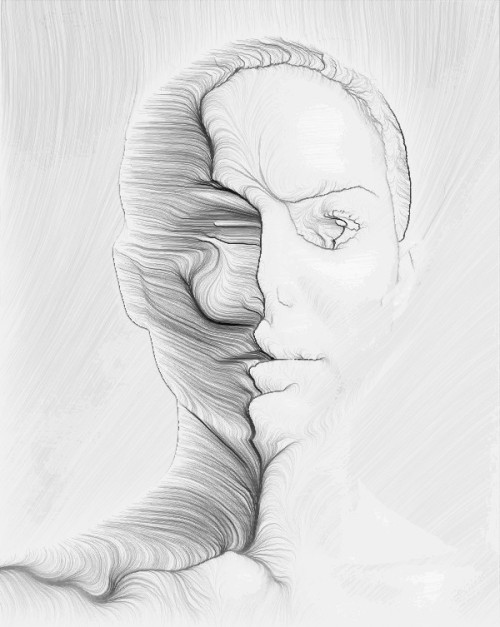
Threadraw
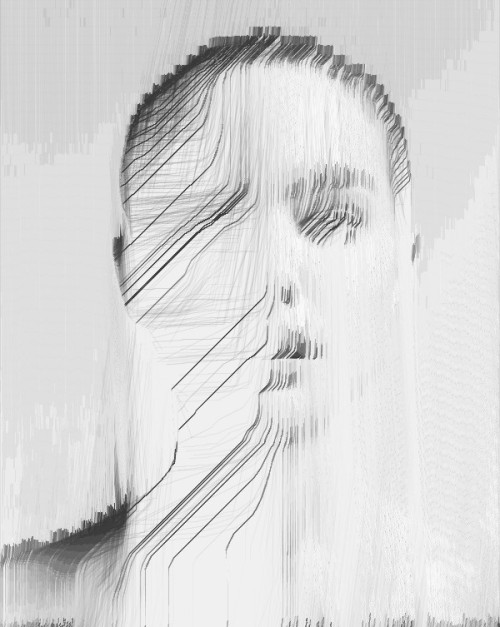
How to apply image data
First load your epitome at the beginning of the sketch
img = loadImage("natalie.jpg"); // PImage img; must be declared globally And so use epitome data following way
// placeholder for vector field calculations PVector v1 = sinusoidal(p,1); int img_x = (int)map(p.x,-3,three,0,img.width); int img_y = (int)map(p.y,-three,three,0,img.height); float b = brightness( img.get(img_x,img_y) )/255.0; PVector br = circle(b); float a = five*PVector.angleBetween(br,v1); PVector v = astroid(a);
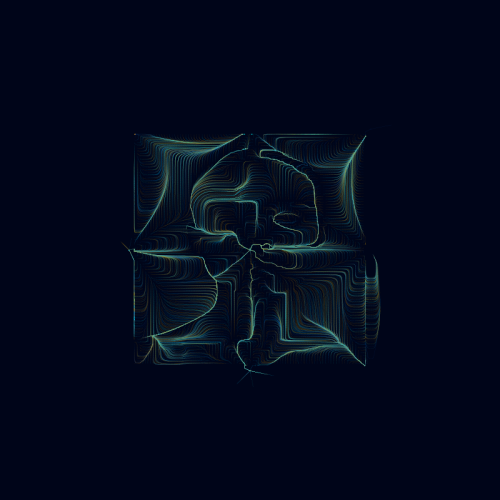
Appendix
This concept is taken from zach lieberman and Keith Peters who explored painting by non-intersecting segments. This thought tin be used on vector fields too. Hither are two examples.
See the code HERE.
The end
Questions? generateme.weblog@gmail.com or Follow @generateme_blog
Source: https://generateme.wordpress.com/2016/04/24/drawing-vector-field/
Postar um comentário for "how to draw 3d vector diagrams"